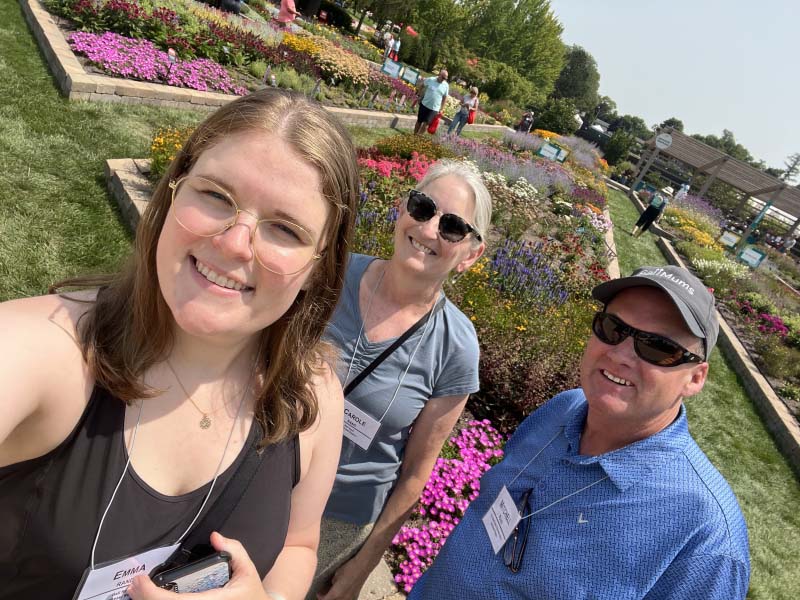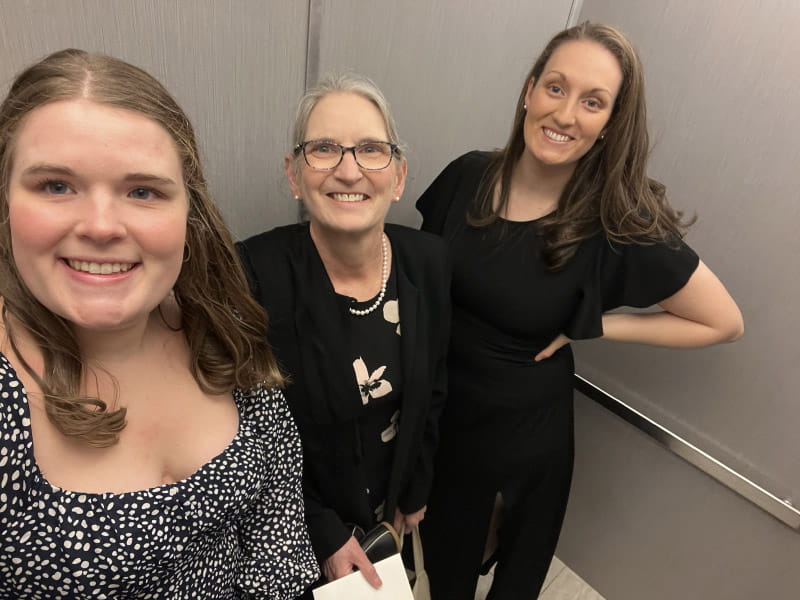This just shows the shitshow of diagnosing young adult strokes.
You'll have to ask your competent? doctor if all the problems in diagnosing young adult strokes have been solved.
young adult strokes (85 posts to December 2012)
And the dangers of high intensity training.
Do you really want to do high intensity training?
Because Andrew Marr blames high-intensity training for his stroke.
Can too much exercise cause a stroke?
The latest here:
'Healthy 23-year-old' had stroke during spin class
By Diane Daniel, American Heart Association News

During a health fair at her workplace, 23-year-old Emma Rand had her vitals checked.
"Have you seen a doctor in a while?" the nurse asked. "Your blood pressure is pretty high."
Rand was surprised. She'd been super active in high school sports. Although she slowed down in college, when a bout with COVID-19 left her feeling lethargic for months, she'd recently started exercising again and was feeling great.
The next month, Rand had her annual checkup. Again, her blood pressure was on the higher end.
"Let's just monitor it," her doctor said.
A month later, Rand went to a spin class at a gym outside of Albany, New York, where she lived at the time.
As the second song started, she felt dizzy. She thought water might help.
Reaching for her water bottle, she nearly fell off the bike.
The spin instructor noticed. She helped Rand into the hallway and laid her down.
"I can't feel my right arm," Rand told the crowd gathering around her. Someone called 911.
When the EMTs arrived, they worked to reduce her high blood pressure.
"We think you have a pinched nerve," an EMT told her.
"But I can't feel my arm," she kept repeating.
Employees at the gym helped her to her feet. They led her around the running track several times.
The feeling in her arm started to return, but it felt odd, like she didn't have full control over it.
At home, she called her parents in Guilford, Connecticut. Her mother, Carole Rand, said, "We're coming up now." They arrived that evening, carrying with them a freshly purchased blood pressure monitor.
Emma's blood pressure was high, so they called the emergency line of her primary physician's office. He called her back.
"I think you're fine, but it's a good idea to go to cardio urgent care in the morning," he said.
At urgent care the next day, a Friday, Emma, who is right-handed, struggled to fill out the intake form because her right arm and hand still felt off, so Carole took over. The cardiologist did some lab work and ordered an MRI for the following week.
After the appointment, Emma felt good enough to go shopping and out to dinner with her parents.
Her parents made the roughly three-hour drive home on Sunday, and on Monday, Emma went to see her primary doctor. He didn't see anything wrong.

The MRI was on Tuesday. Carole returned to accompany Emma for it. Still thinking everything was routine, they planned to go to brunch afterward.
After the image was taken, the technician told Emma to stay in the room until medical professionals reviewed the results. Then the technician asked, "Do you have a family member here?"
Emma said yes, and a nurse went to get Carole.
Soon after, Emma was on the phone with a cardiac nurse. The nurse said: "You've had a stroke, and you need to go to the hospital."
People having a stroke can receive clot-busting medication, providing they get it within 4.5 hours of the onset of symptoms. Emma's stroke – likely at spin class – happened days before.
She spent the next three days in the hospital, undergoing a litany of tests. The conclusion she received from a cardiologist: "We have no idea what caused it. You're a healthy 23-year-old."
She was told to see a neurologist. The next available appointment was months away.
Now feeling "like a ticking time bomb," Emma tried getting on with her life.
She began seeing an occupational therapist to strengthen her right arm and hand. She also needed to relearn sensations. She couldn't tell hot from cold or where she was being touched.
Two weeks after leaving the hospital, she returned to her engineering job. Then came an opportunity to work remotely. She decided to move back in with her parents so they could help with her recovery.
A new cardiologist in Connecticut discovered that Emma had a common congenital heart defect, a hole in the upper chambers of her heart. Known as a patent foramen ovale, it exists in everyone before birth but usually closes naturally shortly after being born. The hole may have allowed a clot to travel to her brain. She later underwent a procedure to close the hole.
Having the problem resolved eased Emma's mind. Still, she had work to do to regain full use of her right arm and hand.
"She'd do things like chopping or stirring and you could see her progression as she got stronger and more flexible," Carole said.

Emma had one more hurdle to clear: getting back to exercising. She was afraid because she didn't know how hard she could push herself. So she took her cardiologist's advice and began cardiac rehabilitation.
"I was definitely the youngest person there, but it was one of the best things I did for my recovery," she said.
Last summer, about a year after her stroke, Emma moved to Wauwatosa, Wisconsin, outside of Milwaukee, for her job.
She's back to working out at a gym. Except for a slight reduction in grip strength, her arm and hand are back to normal. In December, she was part of the ensemble cast in a community theater production of "A Christmas Carol."
"I'm trying to put myself out there more and try different things," she said.
Her biggest frustration is a cognitive change since the stroke; she's no longer a master multitasker. Instead, she's learned to write notes to herself to help stay on top of things.
"The best part," she said, "is that I no longer feel like a ticking time bomb."
Stories From the Heart chronicles the inspiring journeys of heart disease and stroke survivors, caregivers and advocates.
No comments:
Post a Comment